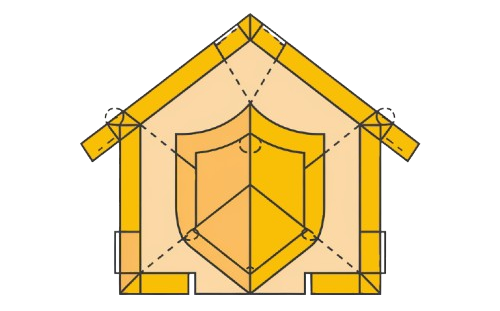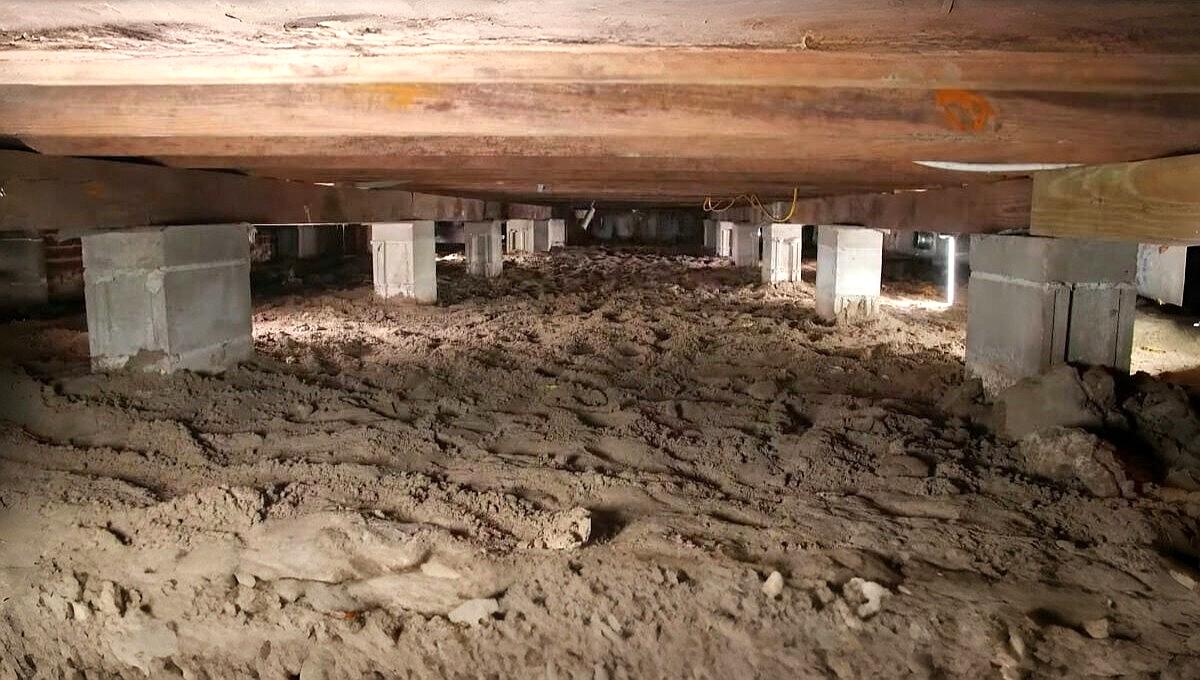A crawl space might seem harmless, but it can quickly turn into an inviting home for rodents, insects, and other pests. Many homeowners don’t realize how easily mice and rats can sneak in, causing numerous problems. These creatures often contaminate food, leave urine, fecal droppings, and spread germs, which can make people sick or trigger allergic reactions. Worse yet, they may pose risks like house fires caused by gnawing on wires.
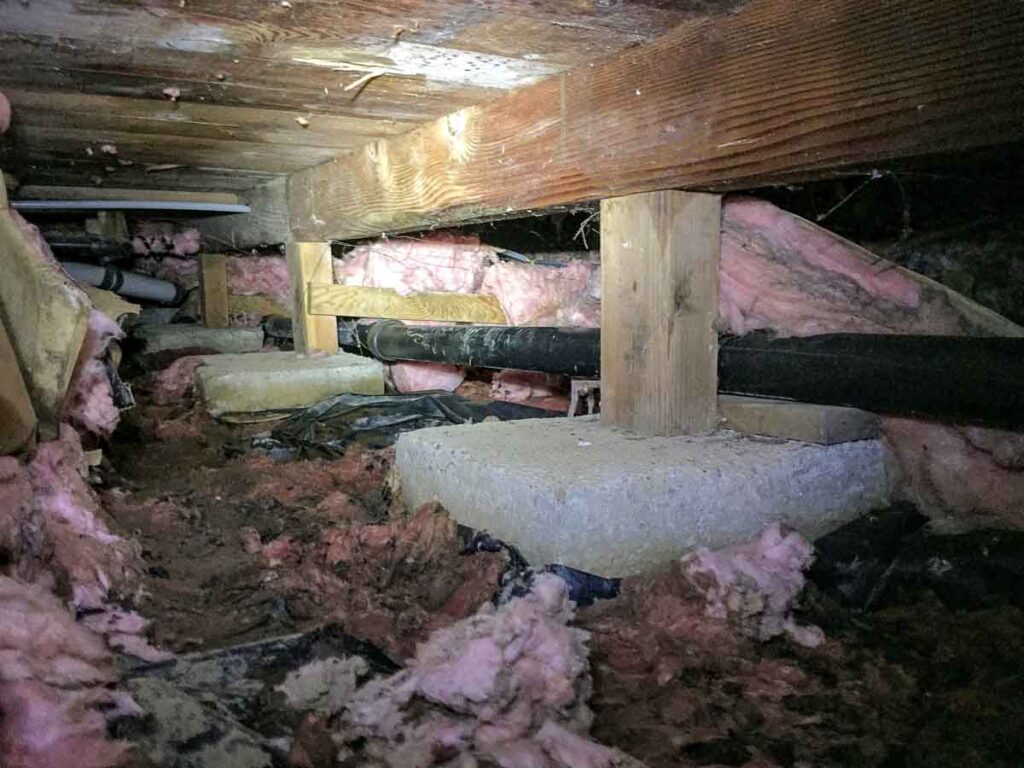
It’s vital to have a strategy to keep rodents out of crawl space. Understanding the dangers pests bring to your home helps you take action and prevent them. Regular inspections and sealing entry points are effective ways to safeguard against these issues, ensuring your house remains safer and more comfortable.
Why Rodents Are Attracted to Crawl Spaces
Rodents are naturally drawn to crawl spaces because they offer everything these pests need to survive. The warm, damp environment provides protection from the elements and predators, making it an ideal shelter. With food supplies like trash nearby and entry points such as gaps, poorly sealed doors, vents, and tunnels, rodents find it easy to get inside. Homeowners might not even notice the problem because these spaces are rarely monitored. Inside, rodents often use fiberglass insulation, nesting material, and open ground to create nests, while taking advantage of the floor, ceiling, and framing for shelter.
The differences between the conditions outside and those in a crawl space make it even more appealing. The dirt floors and rim joists act as entry points, and pipes and wires provide hidden avenues for movement. With plenty of access points and a familiar environment, rodents can quickly take over. From their perspective, these areas are safe and close to essential resources like a food source and shelter, making them perfect for nesting and survival. For homeowners, understanding these habits is a key step in learning how to protect your home and keep rodents from settling in.
Signs That Rodents Are in Your Crawl Space
Detecting rodents in your crawl spaces can be challenging, but here are some clear signs to look for:
- Scratching or scurrying noises coming from the walls or ceiling, especially at night.
- Piles of dirt, droppings, or pellets of fecal matter, often accompanied by a foul odor or strong smell.
- Holes, tunneling, or areas where pests have chewed through insulation or other materials.
- Greasy-looking rub marks, tracks, or worn runways along floors, beams, or walls.
- Burrows in a soil floor or specific areas, such as a bathroom, chosen for latrining.
- Signs of nesting, such as disturbed insulation or shredded materials.
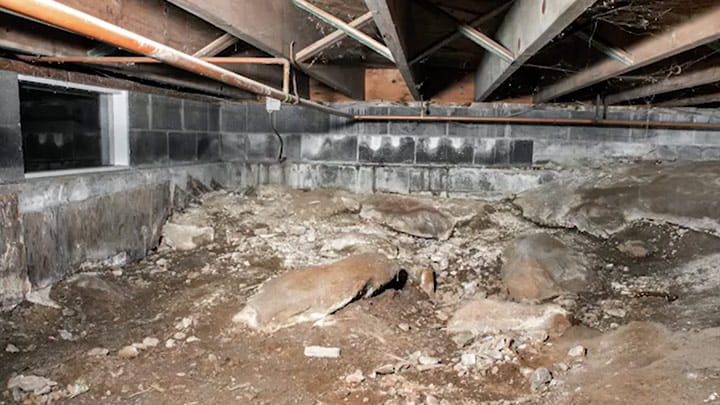
If you notice these signs, it likely points to an infestation. In such cases, consider consulting professionals to address the issue effectively and prevent further damage to your house.
How Can I Help Prevent Pests From Occupying My Crawl Space?
Keeping pests from occupying your crawl space starts with taking preventive measures. Check the area under your home for entry points and seal them to stop infestations before they start. A solid pest defense includes regular inspections and addressing gaps or cracks that pests might use. Acting early helps you realize and solve problems before they spread, protecting your home from pest-related damage.
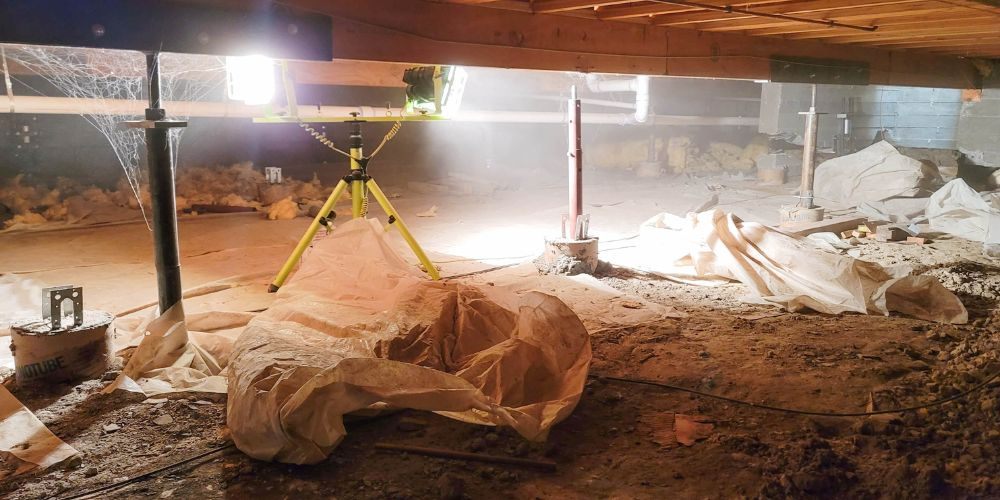
Change Your Landscaping
Poor landscaping can act as an invitation for pests to explore your crawl space. Overgrown bushes, piled mulch, or unmanaged organic material near the foundation can attract rodents, ants, and termites. Keep the area tidy, trimmed, and free of debris to discourage pests from finding a way inside. Maintaining clean, well-kept edges and removing grass or brush near your home ensures pests won’t have a home base to settle in.
Avoid Storing Food in Your Crawl Space
Rodents are attracted to any food you might accidentally leave in your crawl space. They can chew through a wooden cabinet or even hard surfaces to reach it. To protect your space, avoid storing food items there entirely. Removing this temptation eliminates one of the main reasons rodents seek out crawl spaces, keeping your home safer and pest-free.
Seal Cracks and Openings
Sealing cracks and openings in your crawl space is one of the best ways to keep rodents like mice, rats, and chipmunks out. Start by inspecting the foundation walls, floor, and vents for entry points. Even small gaps as little as half an inch can allow pests to squeeze through. Use spray foam insulation, caulk, or steel wool to block these entryways. For a dirt floor, adding a sealant or burrow barrier can further help deter pests.
If you notice persistent moisture or buildup, address it with proper ventilation or consult a professional for treatment. Sealing rim joists, pipes, and wiring is also critical as they act as hidden pathways for pests. By taking these measures, you can dramatically reduce the likelihood of an invasion and make it much harder for pests to settle inside your crawl space.
Add a Barrier to Dirt Floor Crawl Spaces
Installing a barrier on the dirt floor of your crawl spaces is a highly effective way to stop rodents from tunneling inside. A thin slab, often referred to as a rat slab, is commonly used to create a solid layer that prevents pests from digging through the soil. This solution not only blocks their access but also strengthens the base of your crawl space, making it more secure and rodent-proof.
Keep a Trap in Your Crawl Space
Placing a trap in your crawl space is an effective way to deal with rodent activity. Make sure to set the trap properly and use the right bait to attract them. Regularly check the traps to find evidence of rodents, as their movements can indicate ongoing infestations. Keeping traps in place will help control the problem and reduce pest-related issues in your crawl space.
Control Moisture in the Crawl Space
Rodents, insects, and pests like cockroaches and termites are drawn to moisture in a crawl space. To prevent pest infestations, it’s important to eliminate sources of water and lower humidity. Many pests can survive a long time without eating, but they need even minimal water to thrive. Humid air and moist soil, especially in tropical climates, create an ideal environment for mold and fungi. Using effective methods like ventilation and dehumidifiers will help keep the area dry, making it harder for pests to settle and ensuring your crawl space stays safe.
Install a Vapor Barrier in Your Crawl Space
To prevent moisture from seeping through the bare-soil floor in your crawl space, you can spread a vapor barrier made of plastic sheeting. This method benefits your home by keeping the area dry and protecting it from long-term issues like mold or pest problems. It’s best to have a professional install it properly to ensure all gaps are sealed and to avoid damage to the barrier or your home.
Protect Your Crawl Space with Encapsulation
Crawl space encapsulation is one of the most effective ways to solve pest infestation and moisture problems in your home. By sealing off vents, rim joists, and the floor, you can block accessible pathways for rodents and keep pests from entering your crawl space. This process also addresses musty smells, drainage problems, and pre-existing moisture issues. Encapsulation typically entails using a combination of reinforced liners and dehumidifiers, creating a clean, dry, and conditioned environment that pests find uninviting.
If you’re wondering whether encapsulating crawl space worth it, the answer is yes—it can kill three birds with one stone by protecting your home, improving access for plumbing or HVAC, and reducing pest risks. While some homeowners may attempt this crawl space solution independently, hiring a contractor ensures that your space is properly separated from living spaces and part of a secure building envelope. This long-term investment can prevent nesting and mitigate issues caused by mold and moisture.
How To Encapsulate A Crawl Space
Encapsulation is one of the most effective ways to keep your crawl space clean, dry, and pest-free. This process involves four steps that target moisture control, sealing, and insulation to create a protected environment. Encapsulation not only prevents pest infestations but also ensures the area is easier to maintain over time. Let’s examine the key steps in detail.
Step 1: Prepare Your Crawl Space
The first step is to prepare the crawl space by clearing out the area. Homeowners often use this space for storage, but all items, including existing insulation and tarps, must be removed. This ensures the floors, ceiling, and ground are clear for proper installation. In my experience, I’ve seen many spaces filled with old fiberglass insulation and plastic, which can attract pests if left behind. Once everything is cleared, check for issues with plumbing or HVAC equipment, as they will need to be addressed before proceeding.
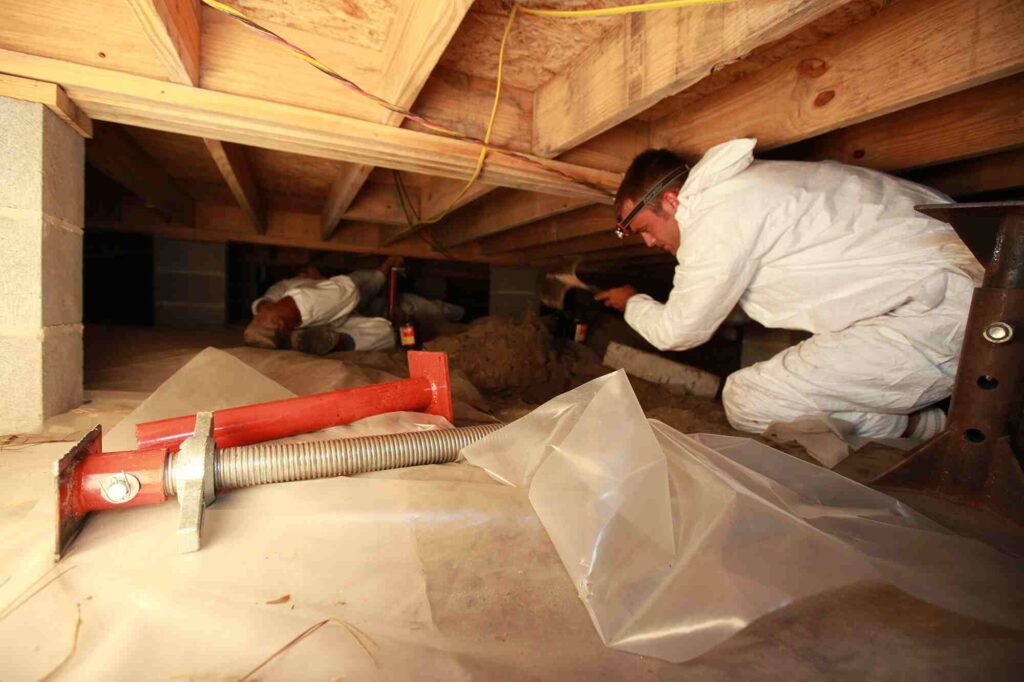
Step 2: Install a Vapor Barrier
After clearing the space, the next step is to install a vapor barrier on the floor. Use plastic sheathing that is at least 12 mil thick to ensure durability and effectiveness as a true vapor barrier. Proper sealing of the edges is critical to block any accessible pathways for insects or pests. On dirt floors, the vapor barrier cuts off moisture and creates a solid base, preventing dampness from affecting the rest of the space. Be sure to follow specific stipulations to make the barrier effective, as pests and moisture can easily bypass improperly installed barriers.
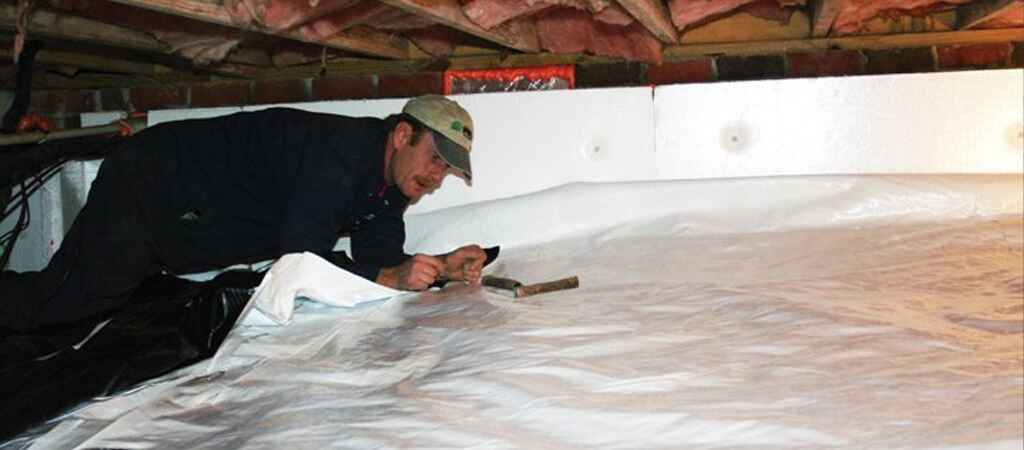
Step 3: Spray Closed Cell Foam Insulation on the Walls
Using spray closed cell foam insulation on the walls is a crucial part of encapsulation. This foam serves as a thermal insulator and also acts as a vapor barrier, preventing moisture from entering the crawl space. The foam is applied directly to the rim joists, vents, and other access points, creating a seamless layer that seals off these areas effectively. Unlike foam board, which is suitable only for flat walls and requires seams and edges to be air-sealed with can foam, closed cell foam covers irregular surfaces while providing excellent insulation. This layer also helps to regulate outside temperatures, keeping the crawl space more stable and preventing rodents from entering.
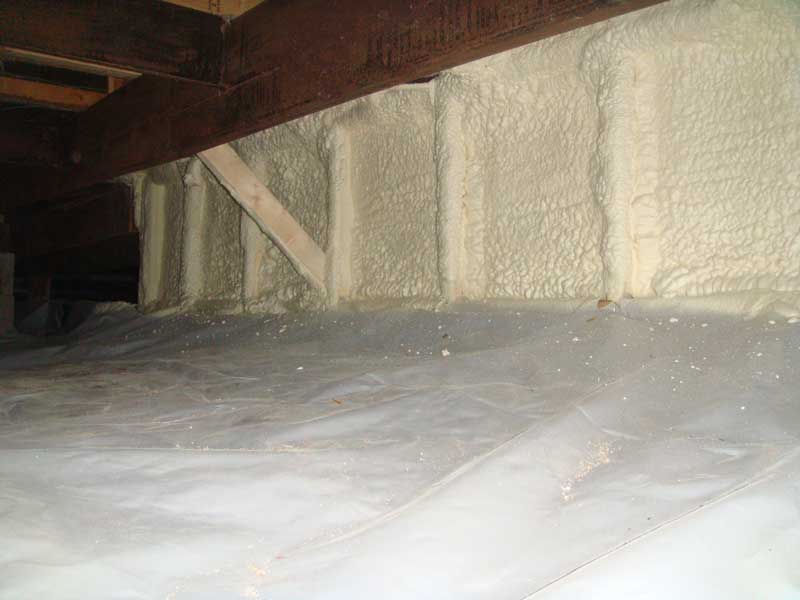
Step 4: Step Up a Dehumidification System
The final step in the process is setting up a dehumidification system to maintain a dry and conditioned environment. You can purchase a standalone dehumidifier or connect to the existing HVAC system to manage airflow. Ensure the walls and floor are properly sealed off, and upgrade the access point with a sealed door featuring insulated panels. This not only blocks the entry area for pests but also ensures the air stays clean and moisture-free. With a controlled crawl space, you eliminate the last easy way for pests to enter and improve the safety and comfort of your living space.
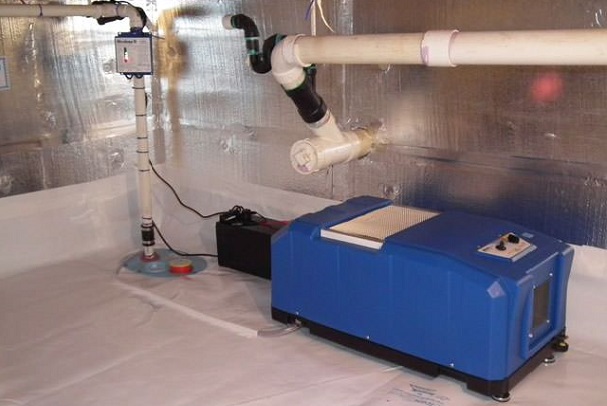
Should You Do Encapsulation Yourself or Hire a Professional?
Encapsulation can be a DIY project, but hiring a professional is often the better option to ensure the job is done correctly. For example, using spray foam or foam board for wall insulation is critical, but the biggest problem with DIY encapsulations is that foam board is too rigid to fit into unique cavities like rim joists, which it cannot seal properly. This can leave areas exposed, creating an avenue for pests, allowing vapor and cold air to infiltrate, and ultimately compromising the benefits of the encapsulation.
By hiring a professional, you can be confident that all areas will be fully sealed off, including tricky spots like the rim joists, without any gaps being left open. This eliminates the same pathways pests use to enter and ensures the encapsulation effectively protects your crawl space. While a DIY approach might save costs upfront, it’s worth considering the long-term advantages of having the job done professionally.
Final Thoughts About Keeping Rodents Out Of Your Crawl Space
Dealing with a rodent problem in your crawl space requires careful planning and action. For homeowners, crawl spaces are an ideal spot for insects, vermin, and other pests due to their easy access and hidden nature. Sealing entry points is an effective way to keep rodents out, but combining this with encapsulating your crawl space can help solve multiple issues. This method addresses musty smells, high energy bills, and accessibility problems, making it a long-term solution. Whether you choose to handle it independently or seek help, identifying weak areas and applying an effective method like encapsulation can protect your home from ongoing pest infestations.
Contact us today, and we’ll connect you with professionals who specialize in crawl space encapsulation to ensure your home stays pest-free and energy-efficient!
FAQ
How Do I Make My Crawl Space Rodent Proof?
To make your crawl space animal-proof, you can lay a concrete floor or add a small concrete wall around your home. This method helps promote a strong barrier, keeping rodents, such as moles, voles, and mice, prohibited from burrowing through the soil and gaining access to your crawl space.
How Do I Keep Critters Out of My Crawl Space?
To keep critters from entering your crawlspace, you can install fences that go 12-18 inches deep into the ground. This stops animals from burrowing underneath your home. Controlling moisture is also key, as crawlspaces with moist environments are very attractive for pests to live. Keeping the area dry and sealed will help prevent digging and deter critters effectively.
What Can I Put Under My House to Keep Rats Away?
Using peppermint oil is one of the best deterrents for rodents and other pests. The fresh smell of the oil can captivate humans, but the strong odor makes pests instantly run away or try to escape the awful scent, sometimes driving them crazy in the process.
How Do I Keep My Crawl Space Pest Free?
The first step to keeping pests out of your crawl space is to clean up any debris or clutter. This makes it harder for pests to hide or build nests. Next, seal all entry points, including cracks and holes, to stop pests from getting inside.
